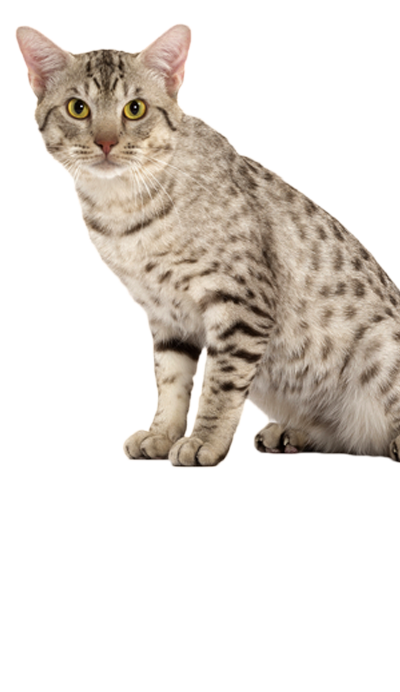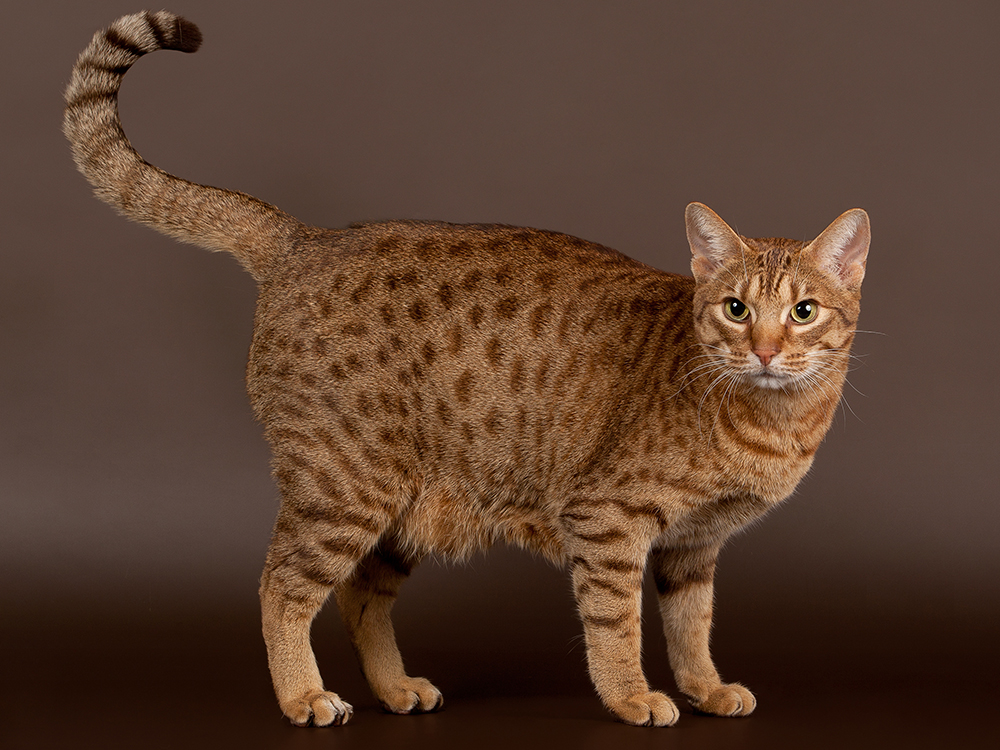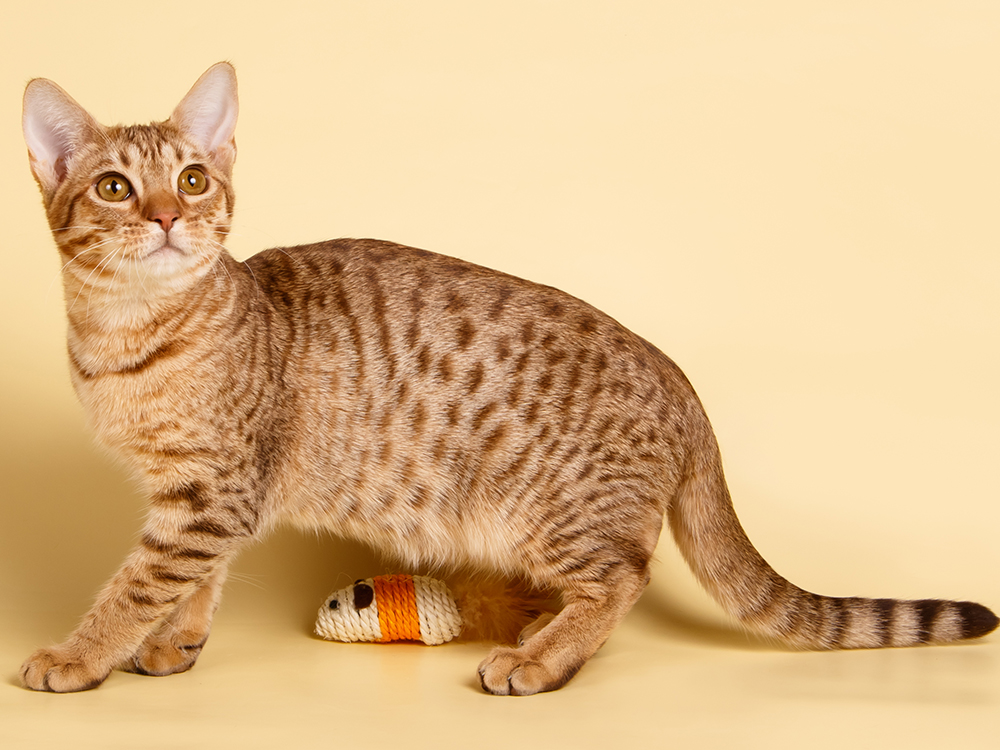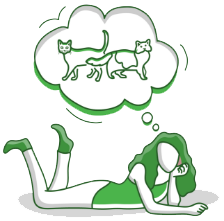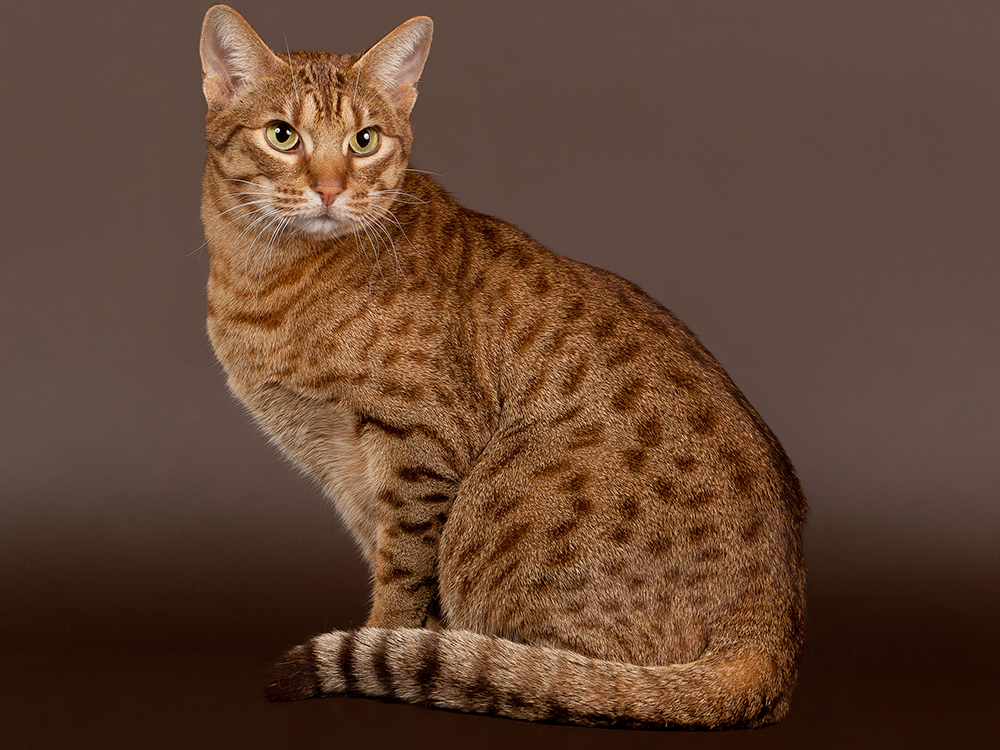
Ocicat Breed Pictures
Vital Breed Stats
| Weight: | 3 - 7 kg M | 3 - 7 kg F |
| Life Expectancy: | 12 - 15 years |
Breed Characteristics
| Size: |  |
| Grooming: |  |
| Trainability: |  |
| Good with Children: |  |
| Good with other pets: |  |
| Affectionate: |  |
| Active Level: |  |
Give a thumbs up if you love the Ocicat

0
More About the Breed
History
The ocicat emerged in 1964 in the US after Virginia Daly of Michigan tried to cross a Siamese with an Abyssinian. The intention was to produce an Abyssinian cat with Siamese colour points. However, the resulting kitten had an ivory coat covered in spots. The little feline also resembled the ocelot, a wild cat. As such, it was named ocicat.
The new breed’s fascinating appearance prompted breeders to develop the line further in order to produce more of the same spotted kitty. The American shorthair was later added to the line, resulting in larger-boned and silver-coloured kittens.
The Cat Fanciers’ Association acknowledged the ocicat in 1987. The International Cat Association did so a little earlier in 1986. Currently, this breed has become a popular choice as a pet amongst cat owners.
Appearance and Grooming
On average, the ocicat weights 7–14 lbs. Its head is a modified wedge shape and has tufted ears. Its eyes are large, almond-shaped, and slightly angled upwards towards its ears. The colour can be any hue, except blue. Its body is long, big-boned, and muscular. Its frame has been likened as being halfway between the svelte Oriental and the robust American shorthair.
The ocicat’s back is rather a bit higher at the rump, adding to its athletic appearance. Its well-muscled legs are proportionate to that of the rest of its body. Its paws are oval-shaped, whilst its tail is as long as its body and broader at the base.
Its coat, the highlight of its physical appearance, can come in virtually any colour. Close lying and satiny in texture, the ocicat’s fur is nicely decked with spots. Even its belly has spots.
Being a short-haired cat that sheds minimally, grooming is an easy process. Its coat only needs occasional brushing.
Temperament and Intelligence
This kitty has been described as having a doglike personality. It bonds very strongly with its humans and craves attention. As such, this is a pet that does not like to be left alone for long. It enjoys a game of fetch and will even engage in “tug of war” when a favoured item is taken from it.
Confident, energetic, and outgoing, the ocicat loves people and likes to be kept busy. It likes to poke its nose into everything happening around it. This feline is known to curl up on laps and let its owners know when it is time to fill its belly again. It can be quite talkative and is especially vocal in greeting its human coming back home. It is also not shy to greet strangers visiting the home.
This sociable kitty also likes to observe its environment from a high place. As such, it is known to climb up as high as it can to look down on its domain. Being a very intelligent feline, the ocicat can be trained to learn or other tasks like dogs. Its sharp mental capacities should be satisfied by giving it puzzle toys or other items that help satisfy its need to keep itself busy. That considered, this feline does well in lively homes.
Nutrition and Feeding
The ocicat should be provided a nutritious diet that fulfils its daily requirements. It should be consistently given the same food following the same feeding times. If there are changes to its diet, those must be done gradually to prevent digestive complications.
The serving portions should depend on this breed’s weight, age, and activity level. Its meals must include at least 25 per cent protein and just 5 per cent carbohydrates.
Health and Exercise
- Gingivitis
- Other teeth and gum problems
Cost of Ownership
A well-bred ocicat will cost no less than £250. Average insurance expenses would cost £15 (basic) or £25 (lifetime) monthly. Food costs may range from £15–£20 each month. For vaccinations, boosters, annual checks, and other veterinary costs, pet care costs may add up to more than £500 each year.
On average, an ocicat owner will spend about £30–£50 per month. The insurance costs can also affect this estimate. For its entire lifetime (15–18 years), the expenses can be as low as £5,400 to as high as £10,800 overall. This estimate does not include the initial costs incurred in acquiring this cat.
Is an Ocicat Right for You?
- This feline loves people and is very outgoing and friendly.
- As a single-coated cat, it is more vulnerable to the cold compared to other breeds.
- The ocicat loves attention and human company so much that it does not like to be left alone for long.
- Intelligent and active, this kitty needs enough mental and physical stimulation to keep it occupied and happy.
